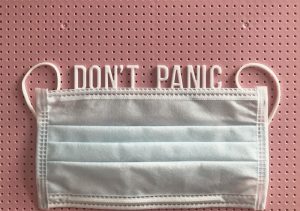This article on 7 ways to address work-related stress, diagnosis and the role of Occupational Health professionals has been written for the Resilience and Wellbeing Network by Dr Jacqui Wilmshurst, chartered psychologist and OH expert.

The latest research indicates that mental health issues are now the number one cause of long-term sickness absence[1] to which stress is the main contributor.
Why, though, do employers need to know whether the stress that is causing suffering is work-related or not?
Obviously they want to make sure that fewer employees end up off sick for stress-related reasons because of their work, and to carry out their legal ‘duty of care’ that work does not unduly harm people.
Yet in my work as an Occupational Health Manager, the majority of requests I have for medical input to cases of work-related stress are for employees who are already off sick. There is dispute around who is responsible and which HR policies should be activated.
So what is the role of Occupational Health professionals in relation to work-related stress and the surrounding issues it raises?
What is work-related stress?
In order to address this question, it’s worth going back to basics. What do we mean by ‘stress’? Stress is a state in which an individual perceives their available resources (internal and external) to be exceeded by the pressures being put on them (by people, the environment or both). The pressure can be in quantity, or in kind. For example, the sheer volume of stimuli to react to and tasks to complete, or being required to do something that one does not feel equipped to do.
For obvious reasons, this makes stress at the emotional level a subjective experience. No-one other than the person experiencing it can verify feeling ‘stressed’, any more than they can verify that another is feeling ‘sad’, ‘upset’ or ‘really rather cross’! When the body responds to the emotional experience of stress, however, there are physiological responses that can, and usually will if left unchecked, lead to illnesses that can be objectively identified.
According to the Health and Safety Executive (HSE), work-related stress is: “The adverse reaction people have to excessive pressures or other types of demand placed on them at work.” It is not itself an illness, but can lead to physical illnesses. For example, compromised immunity leading to increased susceptibility to viruses and infections; muscle tension leading to digestive issues or back and neck pain; higher secretion of unused adrenalin leading to aches and pains. It can also lead to psychological issues and adverse reactions, such as depression, anxiety and emotional hypersensitivity.
‘Diagnosing’ work-related stress
So when and why does an occupational health specialist get asked to ‘diagnose’ work-related stress? Usually when someone is off sick and either wants to keep being paid (so needs it to be recognised as a work-related injury due to HR policy, for example) or is seeking to bring a grievance against someone at work. Or a Manager wants help with a case of sickness absence by referring an employee to the OH physician.
So can a doctor give a diagnosis? The answer is no, for two main reasons: Firstly, it’s not an illness. They can only diagnose secondary illnesses that they believe are stress-related. Secondly, a physician cannot know objectively what has caused the stress, other than to ask the patient. It is then down to that doctor to give an informed opinion on whether they believe the patient’s account. Or whether they perhaps have reason, as an outcome of the structured nature of an occupational health consultation, to think that it may be something else (e.g. problems at home, historical traumas resurfacing). This opinion is not therefore in itself a medical opinion. It’s the informed opinion of a professional adult who happens to be medically trained. It can be used as part of an assessment of potential hazards in the work environment, along with observations and evidence from the line manager, colleagues, HR advisors and trade union representatives.
An extensive piece of research carried out on behalf of the HSE in 2006 concluded that: “… no single and universal case definition was possible, due to the complex nature of work-related stress. It was apparent from stakeholders’ views that stress could not, and should not, be treated as an ‘illness’ but rather presented as a ‘process’, where the emotional experience of stress largely resulted from exposure to psychosocial hazards at work and in the worst case led to impairments of physical and psychological health of clinical and behavioural significance.”[2]
7 ways to address work-related stress
Given all this, what are the implications for how employers approach the issue of work-related stress? How do we minimize the number of cases in which doctors are involved because either a) the situation has reached a stage where managers and HR professionals do not feel equipped to manage it, or b) it has become a medical issue because a state of stress has developed into clinically significant illness?
There is no ‘magic bullet’ (is there ever!?) but there is a growing body of evidence for addressing these factors:
- Involve all stakeholders in taking a preventative approach, led by occupational health, safety and wellbeing professionals.
- Identify hazards and assess risks that are psychosocial in nature (start with the HSE management standards, plus any hazards that are context specific e.g. firefighters’ work includes dealing with severe injuries and harrowing emotional situations) and create control measures to avoid, mitigate and respond to these risks as appropriate.
- Equip people with additional resources to build resilience, so that it is less likely that demands will exceed their perceived or actual resources.
- Create a culture in which employees feel safe to flag interpersonal problems early, and in which they trust that these issues will be sensitively, competently and effectively handled. Keep the employee at the centre of their own health and wellbeing – duty of care goes both ways.
- Encourage and develop peer support, both formally and informally, including establishing networks and developing those human relations skills that enhance our natural abilities as social animals to support, empathise and offer compassion. Also to understand boundaries and avoid unhelpful interventions.
- Support wider wellbeing by acknowledging that we all have a lot going on outside of work and providing support to tackle those issues (e.g. EAP, resilience training, signposting to other services), whilst also being clear on where employer’s and employees’ duties of care start and end.
- Manage expectations – e.g. ‘psychological contracts’ as well as the more legalistic employment contracts. Equip HR professionals to understand psychological health, beyond their traditional focus on policy and process.
Every one of the above measures could be expanded into a blog in its own right, or indeed a whole book! This blog is intended only to invite consideration of the complex issues surrounding this epidemic of work-related stress and to offer some introductory thoughts on how to address the topic in practical and meaningful ways.
Remember, stress, and indeed most ‘mental health issues’, are a human problem with some medical aspects, not the other way around! On this topic, look out for my next blog on tackling the ‘1 in 4’ myth…!
References
Sickness absence in the UK labour market: 2016, ONS
[1] Statistics suggest that mental health problems, predominantly stress, are the second greatest cause of long-term sickness absence in the UK, second to musculoskeletal (MSK) problems. Health professionals agree, however, that many MSK problems can actually also be attributed to stress, for example via prolonged muscle tension or via manual handling accidents caused by lapses in concentration. Nearly one million UK workers suffer long-term sickness absences, Long term sickness absence, Government statistics.
[2] Defining a case of work related stress, HSE
Read more about the Resilience and Wellbeing Network and speak to Lise about how to join.











